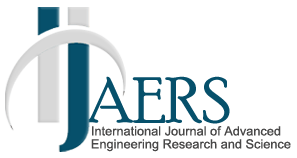Adsorption Properties of Activated Biochars Produced from Agro-industrial Residual Biomass |
| ( Vol-7,Issue-10,October 2020 ) OPEN ACCESS |
| Author(s): |
Jaderson K. Schneider, Laiza C. Krause, Ana P.Carvalho, José M. F. Nogueira, Elina B. Caramão |
| Keywords: |
|
Coconut fiber, silver skin, sugarcane; activated carbon; adsorption; copper. |
| Abstract: |
|
The use of organic wastes (residual biomasses) is a subject of great importance due to the enormous quantities generated around the world and the undesirable environmental impact caused by the incorrect disposal of this material. In this paper, it will be discussed the use of pyrolysis for some of these residual biomasses (coconut fiber, coffee silver skin and sugarcane bagasse and straw), reducing the volume and producing activated carbon for use in adsorption processes. The produced biochar was chemically activated by using potassium carbonate (K2CO3) and applied in the adsorption of copper (II) from aqueous samples. Batch experiments were done to evaluate the influence of contact time and initial metal concentration. The activated carbon produced proved to be an excellent adsorbent for metallic ions (Cu2+) from aqueous solution, mainly due to its superficial area. Using an initial concentration of 500 mg L−1 of Cu(II), the uptake of the activated carbon obtained from sugarcane straw was 135.7 mg g-1, which is an excellent value for metal ions removal from water. Short conclusion: The produced biochars, after the activation showed a very large surface area that confirms the potential use as a powerful adsorbent to recover polluted waters. |
|
|
| Paper Statistics: |
| Cite this Article: |
| Click here to get all Styles of Citation using DOI of the article. |
- Track Your Paper
- editor.ijaers@gmail.com
- ISSN : 2349-6495(P) | 2456-1908(O)



Advanced Engineering Research and Science